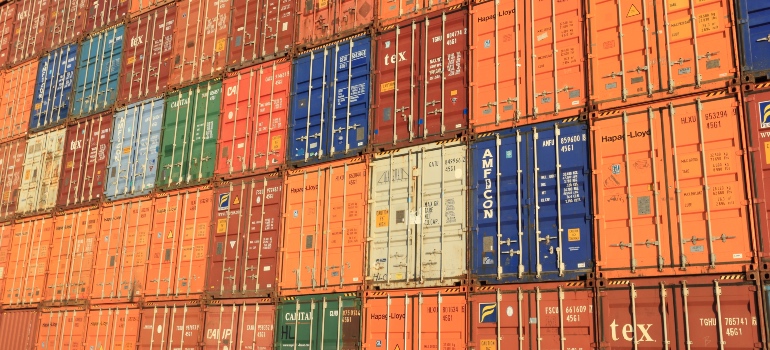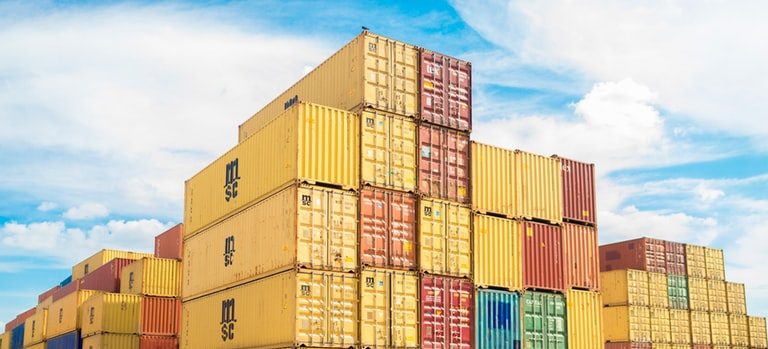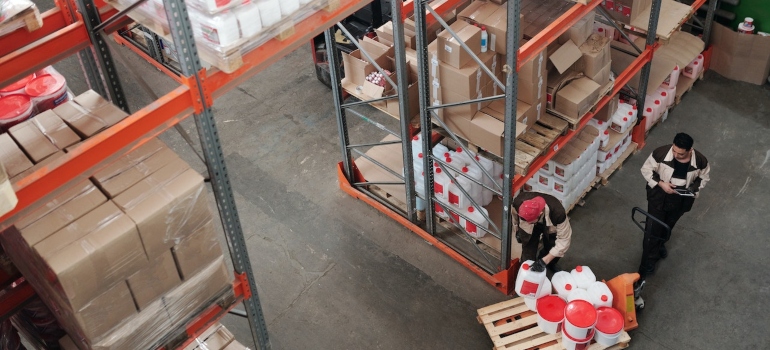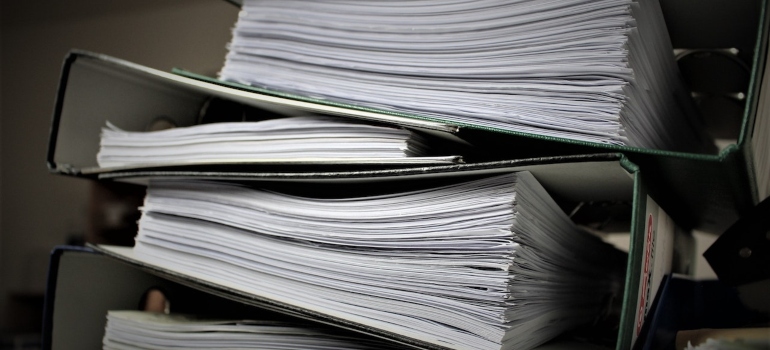Tips for Loading a Shipping Container
Shipping containers are the lifeblood of global trade, safeguarding goods as they traverse oceans, roads, and rails. However, what might seem like a straightforward task—loading a container in WA—requires a nuanced approach to avoid costly mistakes. Understanding the intricacies of loading a shipping container is critical for success whether you’re shipping personal belongings, commercial products, or specialized cargo from Seattle. Hence, in this Hansen Bros. Moving & Storage guide, we dive into the methods and strategies that ensure your cargo arrives intact and cost-effectively.
Understanding the Importance of Proper Container Loading
Why is proper loading so essential? A shipping container is more than just a box; it’s a microcosm of the logistics world. Loading it improperly can lead to disastrous consequences, such as damaged goods, injury, or logistical delays. Poor practices could even cause a container to collapse or tip over in transit.
Therefore, proper loading involves much more than stacking items neatly. It requires a balance between space optimization and stability, ensuring the safety of the cargo and those handling it. From cost savings to legal compliance, the benefits of mastering this skill extend far beyond a single shipment.
Some key points to remember:
- Cost efficiency: Properly loaded containers maximize the number of goods shipped, reducing overall costs.
- Cargo protection: Secure packing minimizes the risk of damage.
- Regulatory compliance: International laws require specific weight and safety standards.
Before loading a container, ask yourself: are you confident in your plan? If not, consulting with professional shipping companies in Seattle can save you time, money, and stress.

Pre-Loading Preparation: Setting the Foundation
The old adage “failing to plan is planning to fail” is especially true when it comes to shipping container logistics. Before you begin, take the time to lay a strong foundation for your operation. This preparation for loading a shipping container will save you from costly errors later.
Choose the Right Container
Not all containers are created equal. Understanding the various types ensures your cargo is housed in the safest and most appropriate environment:
- Standard containers: Ideal for general cargo like furniture or electronics.
- Refrigerated containers (reefers): Necessary for temperature-sensitive goods like food or pharmaceuticals.
- Ventilated containers: Perfect for items like coffee beans or logs, which need airflow.
Additionally, inspect the container before use. Look for visible signs of damage, rust, or leaks, which could compromise the cargo. If you’re uncertain which container suits your needs, a shipping professional can provide tailored recommendations.
Understand Cargo Requirements
What are the unique needs of your cargo? This question should guide your choices for packaging materials, stacking techniques for your shipping crates in Seattle, and container type. Fragile, heavy, or hazardous goods each require specific attention. Ensure compliance with international shipping standards to avoid fines or delays.
Gather Equipment and Materials
Preparation isn’t just mental—it’s physical. Essential tools and materials like forklifts, pallets, straps, and protective coverings should be ready and accessible. Having everything at hand eliminates downtime and makes the loading process seamless.
Planning the Layout: Maximize Space and Stability
Loading a shipping container isn’t just about fitting as much as possible into a limited space. It’s an intricate puzzle where every piece needs to balance safety, stability, and accessibility. A poorly planned load can lead to damaged goods, difficult unloading, or even accidents.
A detailed loading plan acts as a visual roadmap, ensuring that every item is accounted for and placed strategically. Whether you create a manual sketch or use advanced software, diagrams help:
- Organize items based on size and weight.
- Predict and correct potential balance issues.
- Reserve space for essential tools like braces or dunnage.
Next, uneven weight distribution is one of the most common—and dangerous—mistakes. When weight isn’t balanced, the container can tilt or sway during transport. Guidelines for even weight distribution include:
- Placing heavier items on the floor or in the container’s center.
- Balancing weight evenly across the container’s width.
- Avoiding concentrated weight in corners or along one side.
Finally, gaps between items might not seem like a big deal, but they can cause goods to shift and collide during transit. Filling these spaces with airbags, dunnage, or foam ensures stability and prevents unnecessary damage. If your cargo includes weighty or irregularly shaped items, consulting heavy equipment movers or a shipping professional can help you develop creative solutions for space optimization.

Packing Techniques for Safety and Efficiency
Packing a shipping container is a delicate balancing act that demands precision, care, and foresight. Each decision—how items are stacked, arranged, and secured—plays a pivotal role in the success of the shipment. Packing techniques ensure the cargo’s safety and contribute to cost-effectiveness and ease of unloading. Here’s how to pack your container effectively while prioritizing safety and efficiency.
Start with the Heavyweights
Heavy items form the cornerstone of a well-packed container. These items should always be placed at the bottom of the container, providing a stable foundation for lighter goods to rest upon. Such an arrangement prevents lighter items from being crushed under the weight of heavier ones and helps maintain balance during transit. Careful placement of heavy goods is especially critical for avoiding container tilting or swaying, which can lead to accidents or damage to the cargo.
Stack with Precision
The way items are stacked inside the container determines the overall stability of the load. A strategic stacking technique ensures that goods remain secure and minimizes the risk of collapse. Boxes and items should be aligned vertically to maintain balance and stability.
Using pallets for stacking is highly recommended, as they elevate goods off the container floor, improving airflow and protecting against potential water damage. However, avoid overstacking, as it can lead to instability or exceed weight limits, both of which pose significant risks.
Protect Fragile Goods
Fragile items require special attention during packing to ensure they arrive at their destination intact. Start by wrapping these items individually with protective materials such as bubble wrap, foam, or padding. Position them in secure areas of the container, preferably surrounded by softer items that can act as buffers.
Additionally, using dividers or partitions to separate fragile goods from heavier or bulkier items can prevent unintended contact that might cause damage. Don’t forget to clearly label all fragile items to ensure careful handling throughout the shipping process.
Create Accessible Zones
Accessibility is often overlooked but is an essential aspect of efficient container packing. Consider the order in which items are likely to be needed upon arrival. Priority goods, or items that will be unloaded first, should be placed closer to the container doors for quick and easy access.
Grouping similar items—such as products from the same shipment or boxes with identical contents—also makes the unloading process more streamlined. Thoughtful arrangement reduces time and labor costs at the destination.
Label for Efficiency
Proper labeling is an often-underappreciated element of effective packing. Clearly marked boxes save time during unloading and reduce the risk of mishandling. Labels should include details such as the contents, handling instructions (e.g., “Fragile” or “This Side Up”), and destination information.
Securing the Load: The Key to Safe Transit
Packing the container is only half the battle; securing the load is what ensures it stays safe during the rigors of transportation. Whether on rough seas, bumpy roads, or busy railways, poorly secured cargo is at risk of shifting, tipping, or even breaking apart. Employing the right techniques and tools when loading a shipping container can prevent costly damages and ensure compliance with transport regulations.
Anchor the Cargo with Straps and Belts
Large, heavy items need to be firmly anchored to the container to keep them from sliding. Use tension belts and cargo straps to tie these items to the container’s built-in anchor points. It ensures that the load stays stable, even during abrupt stops or sharp turns. Adjustable straps also offer flexibility, accommodating goods of varying shapes and sizes while maintaining tension.
Fill Gaps with Dunnage
Gaps between items can lead to significant problems if left unaddressed. Dunnage—such as air cushions, foam blocks, or wooden planks—is essential for filling these spaces and keeping items from shifting. Inflatable airbags are particularly effective for stabilizing loads in containers with irregularly shaped cargo. These simple tools create a snug fit, providing an additional layer of security.
Seal for Moisture and Environmental Protection
Moisture is a silent threat that can wreak havoc on shipments, especially during ocean transit. Combat this by placing moisture-absorbing desiccants within the container. The products help control humidity levels, preventing issues like rust, mold, and water damage. Furthermore, ensure the container doors and seals are tightly closed to protect against environmental elements such as rain, dust, or extreme temperatures.

Overcoming Common Challenges
The process of loading a shipping container is not without its challenges. From logistical hurdles to environmental risks, anticipating and addressing potential problems ensures a smoother shipping process.
Avoid Overloading and Exceeding Weight Limits
One of the most frequent mistakes in container logistics is overloading, which can result in fines, damaged goods, or even structural failure of the container. Avoid these issues by weighing cargo accurately and ensuring it falls within the container’s payload limits. Tools like calibrated scales or automated load-checking systems can help.
Balance the Load to Prevent Instability
Unbalanced loads create instability, increasing the risk of tipping during transit. Prevent it by evenly distributing weight across the container’s floor space. Ensure heavier goods are placed centrally and lighter items are arranged around them. If uncertain, consult industry standards or rely on the expertise of freight companies Seattle professionals.
Plan for Climate Variables
Humidity, temperature fluctuations, and other environmental factors can have devastating effects on certain types of cargo. To mitigate these risks, use specialized containers—such as reefers for perishables or insulated units for temperature-sensitive goods. Additionally, climate-controlled packaging solutions can safeguard the contents further.
The Role of Regulations and Safety Standards
Shipping container loading is subject to stringent international regulations, designed to ensure the safety of goods and personnel. Ignoring these requirements can lead to severe consequences, including delays, penalties, or rejected shipments.
Complying with SOLAS Guidelines
The Safety of Life at Sea (SOLAS) convention mandates that international commercial shipping companies provide an accurate Verified Gross Mass (VGM) for each container. This ensures the ship’s overall stability and prevents accidents during loading or transit. To comply, use certified weighing stations and provide clear documentation to the shipping line.
Prioritize Workplace Safety
Safety isn’t just about the cargo and loading a shipping container—it’s also about the people handling it. Train workers to use equipment properly, enforce the use of personal protective gear, and establish clear protocols for lifting and moving heavy goods. Safe practices protect both personnel and the integrity of your shipment.
Meeting Customs and Documentation Requirements
Each country has specific customs requirements, which include accurate item descriptions, labeling, and packing lists. Properly labeled hazardous goods, for example, must comply with the International Maritime Dangerous Goods (IMDG) Code. Double-check all paperwork and labeling to avoid costly delays at customs checkpoints.

Pro Tips for Enhancing Efficiency and Reducing Costs
In logistics, small improvements can lead to significant gains in efficiency and cost savings. Here are some professional tips to streamline your container loading process.
Standardize Processes
Consistency is critical in container logistics. Using standard-sized boxes, pallets, and labels simplifies packing, loading, and unloading, while also reducing errors. Standardization ensures better use of space and easier handling.
Invest in Technology
Modern tools like load optimization software and container tracking systems can transform the shipping process. Load optimization software helps you arrange items for maximum space efficiency and stability. Meanwhile, tracking systems allow real-time monitoring, giving you greater visibility over your shipment.
Negotiate with Carriers
Building strong relationships with shipping carriers can yield benefits like lower rates, priority handling, or flexible loading times. Don’t hesitate to discuss terms and explore bulk shipping discounts if you’re managing recurring shipments.
Loading Containers with Precision and Purpose
Shipping container logistics demand meticulous planning, thoughtful execution, and an eye on the future. From selecting the right container to leveraging cutting-edge technology, every step is an opportunity to enhance safety, efficiency, and cost-effectiveness.
The key takeaway? Container loading is a strategic endeavor that directly impacts the success of a shipment. So if you’re unsure how to tackle your next shipment or need tailored advice for a specific challenge, consulting with professional shippers is always a wise move. Their expertise can save you time, money, and the stress of loading a shipping container alone. With the right approach, your goods will travel the world securely, efficiently, and with minimal risk.
Why Choose Us
History
Hansen Bros. Moving & Storage is locally owned and operated by the same family for four generations, since 1890. We have a well-established reputation for service quality and reliability with a high percentage of repeat household and commercial clients.
Professionalism
We’re a certified ProMover by the American Moving and Storage Association with A+ rating with the Better Business Bureau, voted “Best in Western Washington” in 2009 and from 2011 to 2016 by KING5. Our company is fully licensed and insured and member of WMC and AMSA.
Value
Hansen Bros. Moving & Storage provide free, no-obligation in-home estimate and competitive rates, including low minimum rates for shipments moving under 300 miles. We’ve set a refund policy for unused packing materials and three Puget Sound locations to help clients save on travel fee costs.



